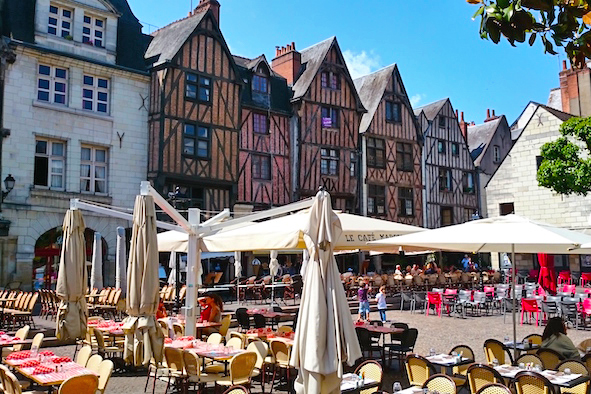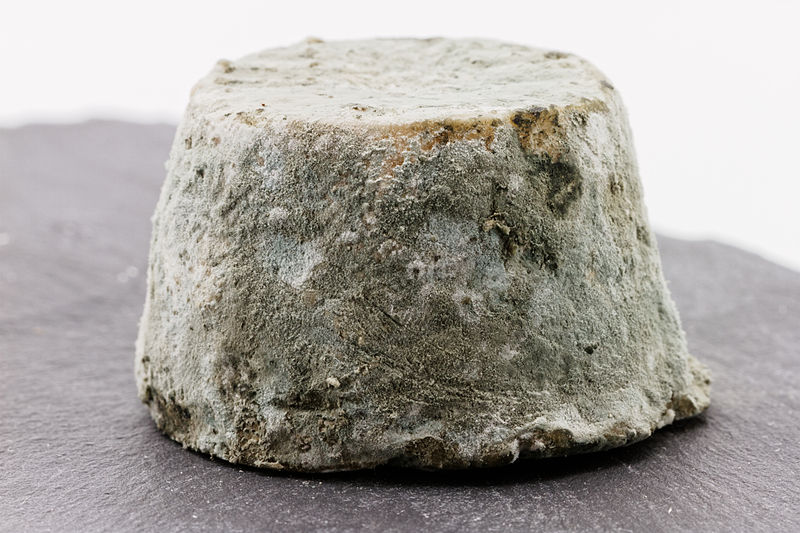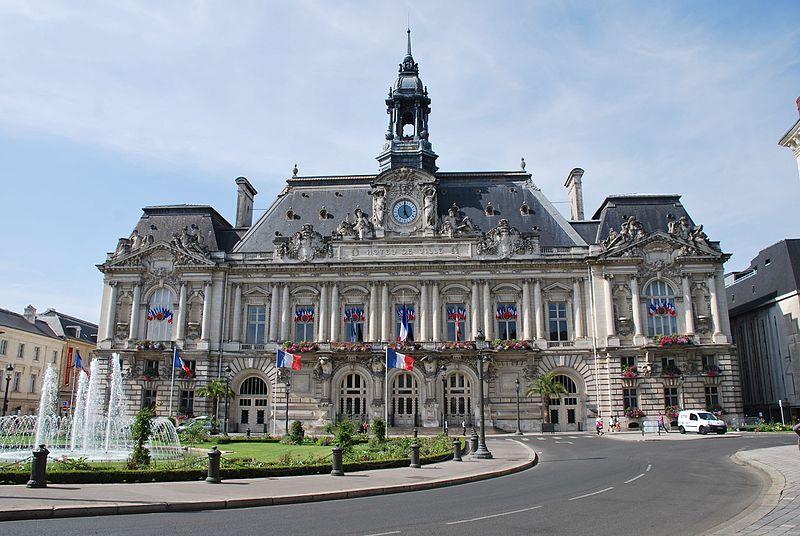Given Tours’ status as the largest city in the Loire Valley, many visitors use it as a jumping-off point to visit the region’s famed châteaux and wineries. But the city itself has much to offer to the discerning traveler, with a rich history rooted in the Renaissance, thanks in large part to the royal court’s presence in the region concurrent with the construction of the nearby castles.

Place Plumereau, Tours (Photo: OmegaPy via Wikimedia Commons)
Strolling through the historic city center is a popular way to become familiarized with Tours. Place Plumereau is the perfect spot to people-watch before setting off on your discovery of the pedestrian streets that wind through “le Vieux Tours.”
The historic center offers a combination of beautiful half-timbered houses and Renaissance architecture. Hôtel Goüin is a 15th century private home and one of the best examples of the latter. It is home to several temporary exhibits throughout the year, but even if you don’t go inside, the impressive façade makes it worth the detour.
Saint-Gatien Cathedral took nearly 400 years to build and thus offers a unique glimpse at the evolution of architecture in France: while the base of the Cathedral, begun in 1170, is more Romanesque in influence, the intricate façade is a clear example of the flamboyant Gothic style, more popular from the late 12th-16th centuries. The towers, meanwhile, boast Renaissance-style caps typical of the later 16th century during which they were completed.
This aesthetic evolution is also evident in the stained glass that adorns the Cathedral: the colorful 13th century windows of the choir are strikingly counterbalanced with the more sober style of the 14th century transept’s rose and chapel windows.
The organ, which legend dictates was bequeathed to the Cathedral by Archbishop Martin of Beaune, originally dates to the 16th century but was heavily damaged during the Wars of Religion and later extensively restored. It thus offers prime examples of both 16th and 17th century sensibilities.
Many people don’t leave the Cathedral without paying their respects to the children of Charles VIII and Anne of Brittany, who died in infancy. Their Carrara marble tombs are built in the Renaissance style and offer a great deal of gorgeous detail.

Tours Château, Tours (Photo: Eusebius (Guillaume Piolle) via Wikimedia Commons)
The nearby Tours Chateau is another marvelous sight and its 11th century edifice is perfect for exploration: ruins and more modern installations coexist in this space, allowing visitors to take in the former ramparts and towers, but also two modern museums. The first, a modern art museum, offers between 10 and 12 exhibits every year, many of which are free to visitors. The second museum is devoted to the history of Tours, with archaeological and historical documents, and interactive exhibits.
Between April and September, Tours boasts a traditional guinguette café overlooking the Loire River running through the city. This café has a robust schedule of concerts, outdoor cinema and more, and it also affords a spectacular view over the Loire River, making it a fantastic place to sit and enjoy a drink.
Eat and Drink
If you’re lucky enough to have nice weather for your visit to Tours, take advantage of some of the city’s food markets to create a picnic lunch. Over 50 stalls in the covered market (or “Halles”) offer plenty of locally-produced options, including goat’s cheese and local wine from the Loire Valley region.

Local goat’s cheese, Tours (Photo: Thesupermat via Wikimedia Commons)
Aside from les Halles, Tours is also frequented by a number of daily markets; with three markets every day except Mondays throughout the city, there are more than enough places for foodies to explore. Of course, Tours is also home to some fantastic restaurants.
La Maison des Halles, located not far from the eponymous market, specializes in local cuisine and is famous for its excellent-quality beef. Casse-Cailloux is another authentic option, known for no-nonsense home-style cuisine like slow-cooked hare or house-made terrines.
For a slightly higher-brow option, l’Arôme is a classic: this restaurant effortlessly marries haute cuisine and bistro fare, encapsulating a trend the French have dubbed bistronomie; a portmanteau of bistro and gastronomy. The co-owners have worked with the likes of Michelin-starred Joël Robuchon and Guy Savoy and bring their knowledge to this restaurant.
A more low-key option perfect for travelers with children is Mamie Bigoude, a crêperie whose décor evokes a kitschy home. The bedroom, bathroom and sitting room are all represented, each of which is the perfect place to enjoy simple, yet delicious, savory galettes and sweet crêpes.

City Hall, Tours (Photo: N.duske via Wikimedia Commons)
Hotels
Tours offers lodging options for all sorts of travelers. For the royal treatment, Hôtel l’Univers Tours is the perfect option. Located just moments from the beautiful 19th century city hall, this hotel boasts a luxury spa in addition to its beautiful rooms and view over central Tours.
The 1930s-inspired Grand Hôtel de Tours is a three-starred, centrally-located option not far from the train station, making it the perfect departure point for those who wish to explore the region. Its Art Déco aesthetic and spacious rooms are major draws.
The boutique La Maison Jules allows visitors to experience 19th century elegance and modern comfort, with rooms located in a renovated former private mansion. Five unique rooms comprise this cozy hotel, located just steps from the Cathedral.
For a more inexpensive option, Tours is also home to several hotels that are part of the Ibis chain. Clean and comfortable, these hotels won’t break the bank.